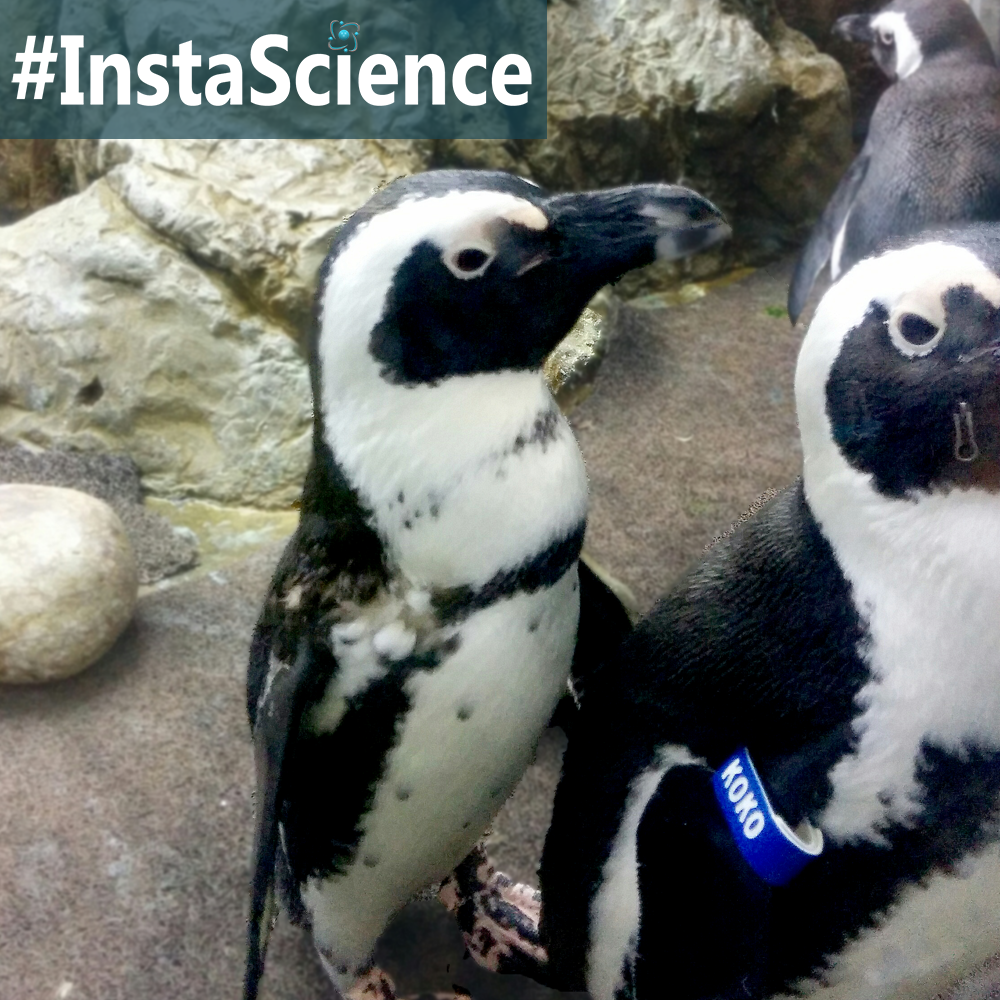
My kids love the Penguins of Madagascar on Netflix – the antics of those birds crack us all up! And so when we visited an aquarium on a recent field trip, we had to spend quite a bit of time observing their penguins. We saw firsthand how these birds fly through the water and waddle on land.
Penguins are flightless birds. They have “wings” that act like flippers instead – so they can’t soar in the sky, but they can really move through the ocean. Because of this, penguins spend half their time in the water and the other half on land, which is a good thing because their diet consists mainly of fish!
Their overall coloring helps to camouflage them in the water. Their dark coloring on their back makes them hard to spot from the sky above as they swim through the water. And the white coloring on their belly makes them difficult to see from below as they streak through the water. Luckily, penguins have no natural land-based predators because their “tuxedos” make them easy to spot on the shore.
Penguins do have feathers just like other birds. Their feathers serve to trap heat, which keeps them warm in the bitter cold where they live! Their outer feathers are coated with an oily substance that helps to shed water once they return to land after a swim. Penguins do lose their feathers in a process called catastrophic molting. Rather than replacing a few feathers at a time, penguins have to spend two to three weeks on land as they lose all their old feathers and grow new ones in one shot.
Most penguins prefer to live in large colonies that can contain thousands of birds. Even so, they will mate with the same member of the opposite sex year after year. After mating, the female will lay an egg, which the father will keep warm until it hatches. Then, both mom and dad will help to raise the chick once it has hatched.
Fun Fact – Wild penguins are found only in the Southern hemisphere, which means that no penguins live at the North Pole!
More Homeschool Science Helps
- This time last year, we shared about Scoria.
- Don’t miss episode 19 of my podcast where I shared about a question, “Do I really have to do experiments?“.
Related Homeschool Science Activities
Keep the learning going with these science activities!
- Waterproof Feathers – You will need a few large feathers, some oil, a paintbrush, and a squirt bottle with water. Use the paintbrush to paint oil on one of the feathers and set it aside for 10 minutes to allow the oil to absorb. Then, lay the treated feather next to an untreated one and spray both with water. (You should see that the water beads up on the treated feather and that the water can be easily shaken off, while the untreated feather is a soppy, clumpy mess. The type of oily waterproofing is what helps to keep penguins dry in spite of the fact that they spend half their time in the water!)
Links to Research
- Fun Penguin Facts for Kids – Enjoy some fun facts about penguins.
- 20 Fun Facts About Penguins – Some things you might not know about everyone’s favorite flightless bird.
- Baby Penguins Emerge from their Shell {Video} – Watch as penguin hatchlings peck their way free.
 Sign up below to receive weekly tips & tools for homeschool science and we'll send you a FREE copy of
Sign up below to receive weekly tips & tools for homeschool science and we'll send you a FREE copy of
Thanks for the printables. We talked about penguins earlier this week. This is timely for us.
Deborah, you are welcome!